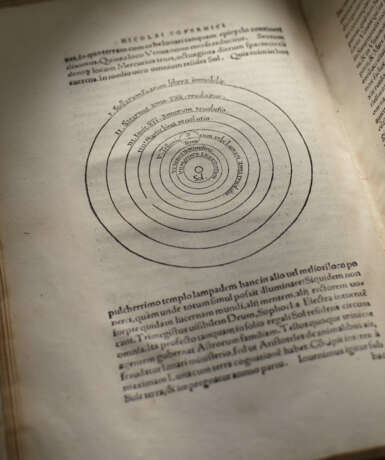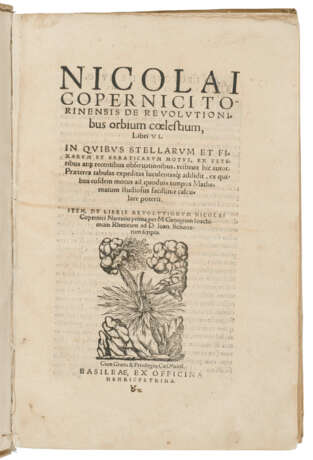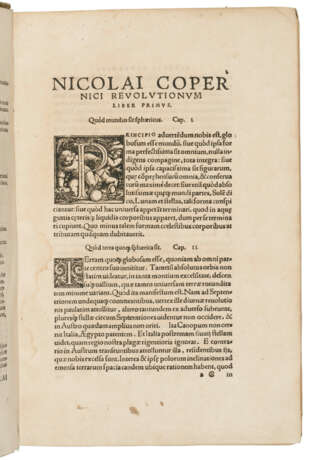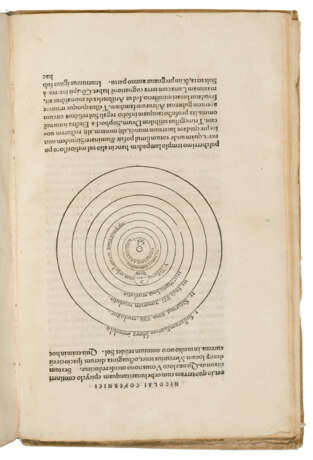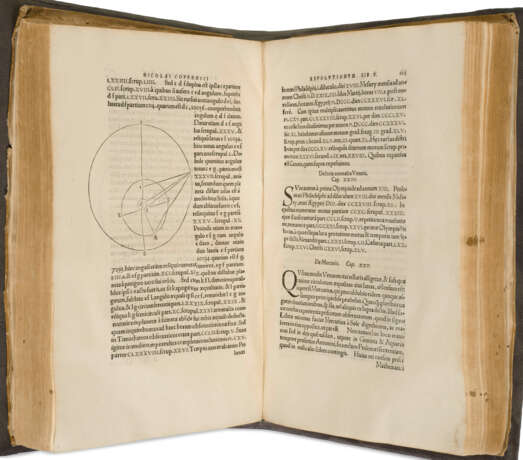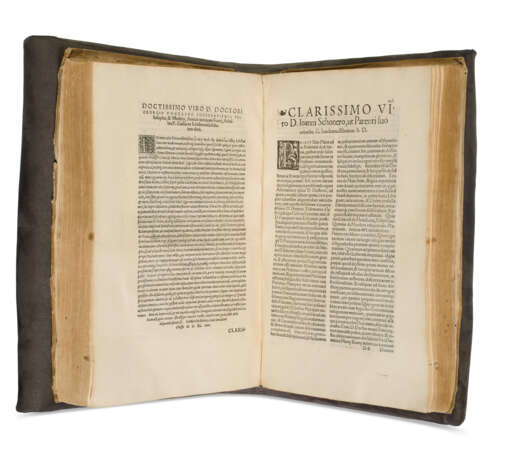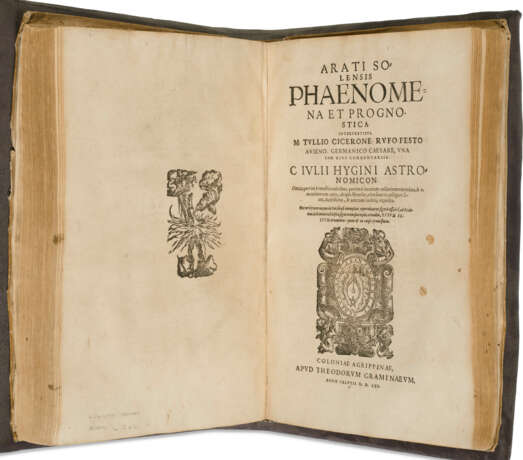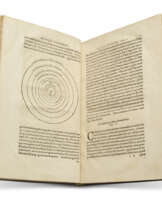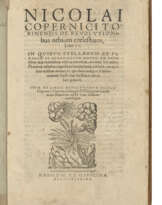ID 887871
Los 94 | De revolutionibus orbium coelestium
Schätzwert
$ 120 000 – 180 000
[Bound with:] ARATUS. Phaenomena et prognostica. Cologne: Theodorum Graminaeum, 1570.
A fine, tall copy of the second (authorized) edition of the most significant scientific publication of the 16th century. De revolutionibus placed for the first time the sun at the center of the heavens and described the earth's annual rotation around the sun and its diurnal rotation. Copernicus denounced the geocentric belief in the immobility of the earth as based on mere appearance. In order even to entertain the idea of heliocentrism, Copernicus had to break with virtually all current knowledge: astronomical, metaphysical, theological and, most basically, simple sensory perception. The geocentric system of Ptolemy had held sway for over a millennium; Aristotelianism dictated that there was a fundamental difference between heavenly and terrestrial bodies; and theological dogma considered geocentrism as the very foundation of the special relationship between God and man. Aware of the radical nature of his theory, Copernicus composed an introduction in which he attempted to trace historical antecedents for his basic tenets. He cites antecedents for the mobility of the earth in Pythagoras and Heraclides and for the earth's revolution around the sun in Aristarchus. While these antecedents provided a handy defense for Copernicus, it is unlikely that they played any significant role in developing his theory (cf. O. Gingerich, Eye of Heaven, 1993). In the event, the Church never officially condemned Copernicus's work as heretical, in part because its observations were essential to reform of the calendar and thus to the precise determination of Easter.
The present edition is the first to contain Rheticus's Narratio prima, being a summary of heliocentrism and an account of the effort it took to persuade Copernicus to publish. Copernicus had first circulated his ideas on heliocentrism in manuscript form, catching the attention of the young mathematician and astronomer, Georg Joachim Rheticus, who became the chief advocate of his new theory. Rheticus’s summary appeared in print in 1540, three years before the first edition of Copernicus’s own publication, in Gdansk. The Gdansk edition was quickly followed by a pirated edition printed in Basel. The present volume is the second authorized edition of De revolutionibus and the first edition to unite the works of both Copernicus and his advocate, Rheticus.
Petri’s edition reproduces almost exactly the main text of the 1543 edition, including Andreas Osiander's unsigned prefatory letter—an attempt to placate eventual critics of the work by emphasizing its purely theoretical aspect. The errata, listed on a leaf inserted in some copies of the first edition, were not corrected for this edition. Petri added a prefatory recommendation by the noted astronomer Erasmus Reinhold (printed at the end of the index), stating that "all posterity will gratefully remember the name of Copernicus, by whose labor and study the doctrine of celestial motions was again restored from near collapse..." (Owen Gingerich's translation, Eye of Heaven, p.221). In his census of the 1543 and 1566 editions, Owen Gingerich has located 317 copies of the second edition, making it only slightly less rare than the first. Adams A-1518 (Aratus); Adams C-2603; Houzeau & Lancaster 2503; Gingerich An annotated Census of Copernicus' 'De revolutionibus' (Nuremberg, 1543 and Basel, 1566), II.305; Houzeau & Lancaster 2503; Taylor Mathematical Practitioners pp.184, 199 and 138.
Two volumes bound together, folio (298 x 196 mm). Roman type, occasional Greek type. Woodcut diagrams, printer's device on title, a different device on final verso, woodcut historiated initials. Narratio prima in double-column. Aratus with woodcut illustrations of constellations. (Some occasional very pale marginal dampstaining.) Early 18th-century German vellum over paste-board, blind-paneled sides, acorn tool at the corners, floral ornament in the center (covers slightly bowed, chip at fore-edge on front cover, a few pale stains). Quarter morocco box. Provenance: small engraved Polish royal arms cut out and mounted on front pastedown (once identified by A.W.C. Phelps as the arms of the Elector of Saxony and King of Poland, either Frederick Augustus I[II] [1670-1733] or his son Frederick Augustus II[III] [1696-1763]) – Hartung Auction, 10 November 1981, lot 403 – sold to: Herbert Rosen, New York City doctor – Christie's, 24 May 1989, lot 101 – Richard Green (his sale, Christie's New York, 17 June 2008, lot 61).
| Künstler: | Nicolaus Copernicus (1473 - 1543) |
|---|---|
| Kategorie des Auktionshauses: | Gedruckte Bücher |
| Künstler: | Nicolaus Copernicus (1473 - 1543) |
|---|---|
| Kategorie des Auktionshauses: | Gedruckte Bücher |
| Adresse der Versteigerung |
CHRISTIE'S 8 King Street, St. James's SW1Y 6QT London Vereinigtes Königreich | |
|---|---|---|
| Vorschau |
| |
| Telefon | +44 (0)20 7839 9060 | |
| Aufgeld | see on Website | |
| Nutzungsbedingungen | Nutzungsbedingungen |
